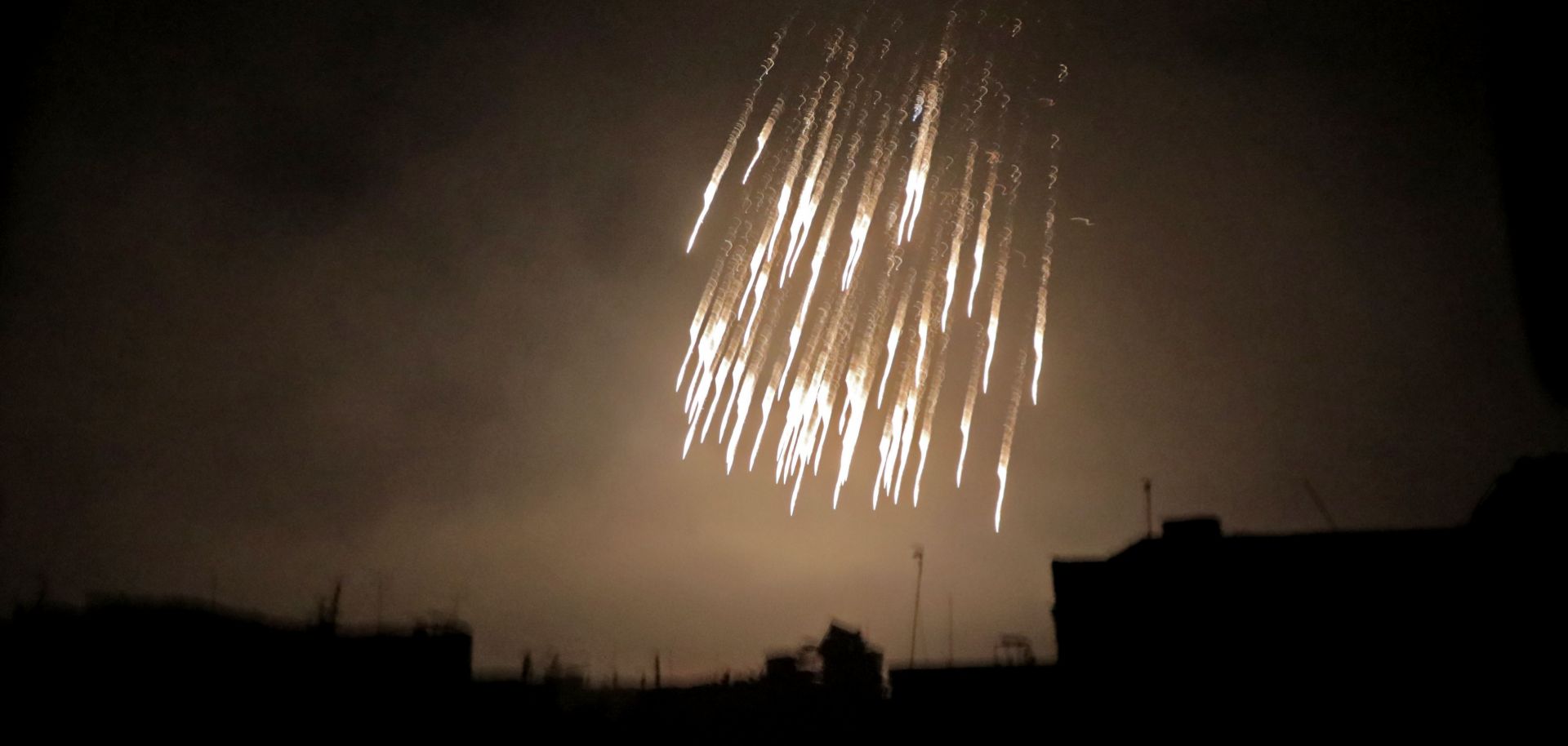GUIDANCE
The Signs, Options and Risks of a U.S. Strike on Syria
Apr 10, 2018 | 23:58 GMT

A photograph taken during a March 23, 2018, bombardment in the rebel-held town of Douma, in eastern Ghouta outside Damascus.
(HAMZA AL-AJWEH/AFP/Getty Images)
Highlights
- The United States is building a military coalition to deter Syria's use of chemical weapons.
- This coalition may conduct a broader operation with a bigger target list than the U.S. strikes conducted in April 2017, but it would not be intended to change the civil war's frontlines.
- Like 2017's strikes, any potential operation will try to avoid Russian casualties and mitigate risk of further political escalation for the coalition.
Proceed to sign up
Register NowAlready have an account?
Sign In